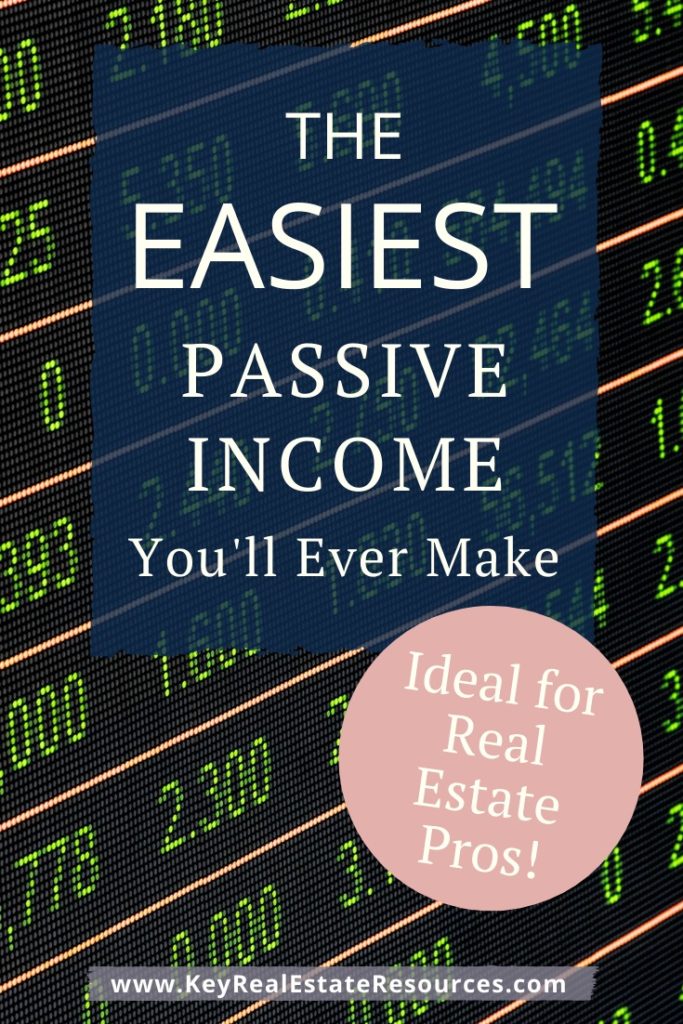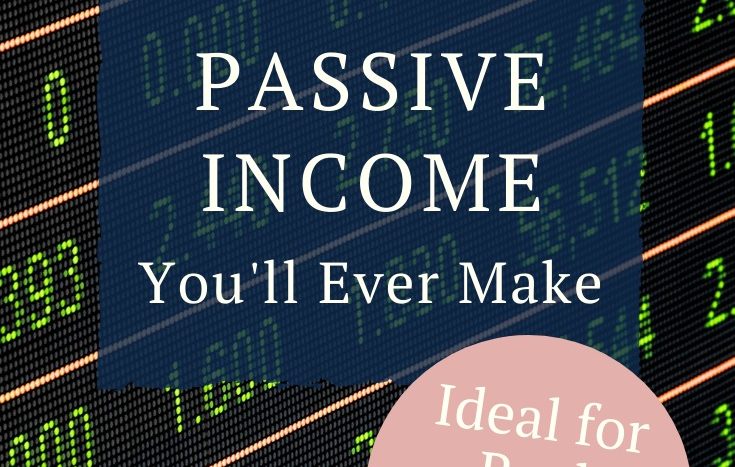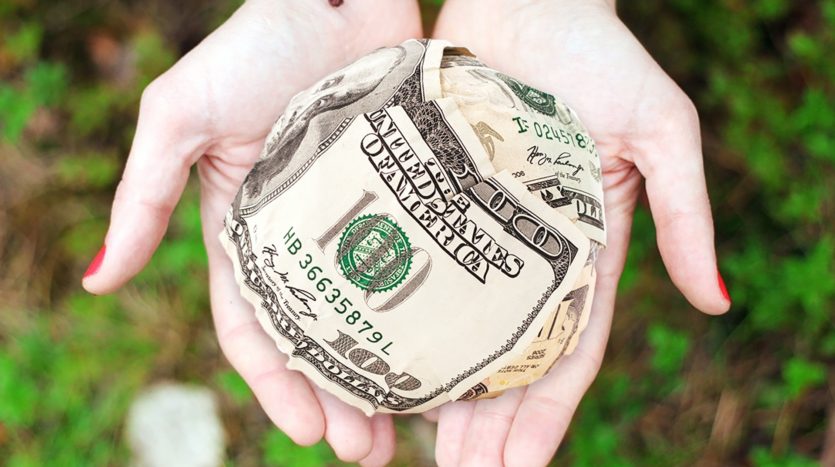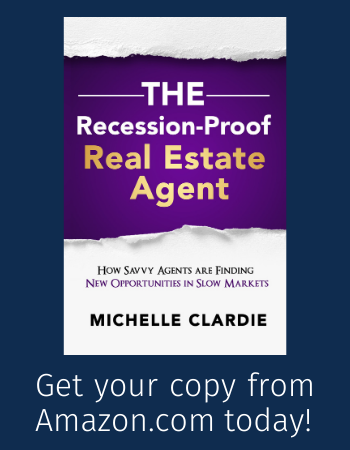Anyone want to venture a guess as to what the easiest passive income you’ll ever make could be?
Real estate? We do focus on real estate here at Real Estate Side Hustles, so that would make sense…but no. Real estate is an amazing investment, but it takes some work. You need to invest substantial time and money upfront in finding (and probably renovating) the property. Then you have ongoing property management to consider.
Selling digital products like eBooks? Another good guess. But again, those take an upfront investment of your time to create and promote your products before you’ll start to see any passive cash flow.
What if you could make money without any substantial upfront investment of time?
What if you didn’t necessarily even need to put down a substantial financial investment up front?
And what if you could earn enough passive income to cover your living expenses so you could be financially free?
Geez, it sounds like I’m trying to sell you something. I promise I’m not trying to sell you anything! I just want to help you manage your money so you can focus on your life instead of your bills.
And that’s why I want to introduce you to dividend growth investing as the easiest passive income you’ll ever make.
Before we go any further, let’s clarify a very important point. I’m not a certified financial planner. I am not qualified in any way to give you financial advice. I’m just another American worker aiming to make my money work as hard for me as I do for it. And dividend growth investing is one of the ways I make that happen. So it might work for you too! I’ll present you with the information from my personal experience and research, and I’ll provide you with some additional resources. Then you can run the idea by a financial expert and decide for yourself if dividend growth investing is for you.

What is Dividend Growth Investing?
Dividend growth investing is an investment strategy that focuses on stock dividends rather than stock price performance.
Most stock market investors choose their stocks by analyzing the stock price trend. They try to buy stocks while the stock price is low, then sell when the stock price is high.
Dividend growth investing, on the other hand, more or less ignores stock price. Instead, it focuses on dividends, which are simply payouts a company makes to its investors. See, some companies like to reward their investors whether the stock market is up or down, so for every share you own, the company will pay you a small amount (usually every quarter, but that’s not a hard-and-fast rule).
Dividends are completely independent from stock market prices. The dividends can go up even as the stock market goes down. We talk a lot about recession-proofing here at Real Estate Side Hustles, and dividends are a great example of recession-proofing your investments.
Even during the Great Recession, Coca-Cola’s dividends increased every year. In fact, Coca-Cola has paid dividends to its investors every quarter since 1920, and the dividend amount has increased every year since 1963.
The concept is incredibly simple. You buy stocks that generate dividends, and you get a paycheck every quarter for doing nothing more than investing.
But there’s a trick to turning this into a substantial cash flow.
Here’s the trick: instead of accepting those meager dividends in the early days of your investment portfolio, reinvest your dividends. You can arrange to have your dividends automatically reinvested so instead of receiving a payout, your dividends are used to buy more stock. That’s how you can grow your dividend growth portfolio exponentially.
What Makes Dividend Growth Investing the Easiest Passive Income I’ll Ever Make?
Here are just a few of the reasons dividend growth investing is the easiest passive income you’ll ever make:
Minimal upfront time investment
It only takes a couple hours to open your investment account and select your stocks (and most of that time is just research to decide which stocks you want).
Minimal ongoing time investment
You can create auto-transfers to move money from your primary checking account to your investment account regularly. So your only active ongoing time investment is checking your stocks once or twice each year to see if you want to make any adjustments.
Relatively low upfront financial investment
If you have a large amount to invest upfront and want to start living off dividends right away, you certainly have that option. But if you don’t have much to start with, you can still get in on this.
Start small with a couple hundred dollars spread out over a few stocks of your choice. Just know that some investments do have minimum requirements.
If you choose to invest in Dividend Growth Index Funds (which are groups of stocks as opposed to stock in a single company), the initial investment could be a couple thousand dollars. Which is on the high side for market investments, but still low in the grand scheme of investing.

The Downside to Dividend Growth Investing
This all sounds too good to be true, right?
Well, to prove that it’s real, let’s talk about the downsides.
It takes a lot of (passive) time
You don’t have to do anything special while your money grows, but it will take time to grow on its own. We’re talking decades here. This is a long game, not a get-rich-quick scheme.
You’ll need to invest a lot of money over time to live off your dividends
If your goal is to live entirely off the dividends generated by your investment portfolio, you’ll need to have a lot of money in that portfolio. So unless you have a large amount of money to invest upfront, you’ll need to continue investing every month for the next few decades.
Companies can stop paying dividends at any time
These companies aren’t required to pay dividends. They can decide to stop paying dividends at any time.
And that could leave you in a rough position. If you no longer have the benefit of dividends, you may want to sell that stock to invest in something else. And who knows what the stock price will be at that point in time. Remember, you chose that particular stock for the dividends, not for the stock price. So the stock price may not be higher now that it was when you originally purchased it.
Now, the good thing is that, if you were reinvesting your dividends, your portfolio has grown because of those additional investments. So you’re still likely to come through just fine. Just not exactly how you planned.
Case Studies of the Easiest Passive Income You’ll Ever Make
Let’s looks at how this dividend investing works in practice.
Here’s an example from Investopedia. In this example, you’ll notice that there’s a large upfront investment, but then no additional ongoing investments (other than reinvesting your dividends):
Assume you bought 1,000 shares of a stock that traded for $100, for a total investment of $100,000. The stock has a 3% dividend yield, so over the past year you received $3 per share, or a total of $3,000 in dividends. Assuming the stock price doesn’t move much, but the company increases its dividend by 6% a year, after 10 years the hypothetical portfolio will have $7,108 in dividends. After 20 years of dividend reinvestment, you will receive more than $24,289 a year in dividends.
Read more of the Investopedia article: How To Live Off Your Dividends
To see how this works in the real world, imagine a young man named Anthony. He’s 18 years old and has just joined the workforce. He decides that he wants to start making money from dividend stocks so he begins investing in shares of high quality, blue chip companies that show healthy growth, strong balance sheets, and which have a history of increasing the dividend paid to stockholders over time. He wants to avoid taxes so he opens a Roth IRA to hold his dividend stocks, making sure to take advantage of the Roth IRA contribution limit each year. That means he can save $5,500 annually, or $458.33 per month. As long as he follows the rules of Roth IRA investing, he will never pay a single penny in taxes on the money he makes in the account.
Anthony manages to grow his investments at 8% for the next 50 years. By the time he reaches 68 years old and is ready to retire, his portfolio has blossomed to $3,155,735.86.
If he insists on an average dividend yield of 3%, he would be collecting $94,672.08 in cash dividends each year. Remember, he doesn’t have to pay a single penny in taxes on this income because the stocks are held within the Roth IRA.
Read more of The Balance’ article: Making Money from Dividends
How to Start Your Dividend Growth Portfolio
I personally didn’t get into dividend growth investing until I had my saving and investing basics covered:
- an emergency savings account with enough money to cover 3-6 months’ worth of living expenses (on top of other emergencies, commission-only professionals need this cushion in case they hit a sales drought).
- a “dream fund” specifically for saving money to accomplish dreams like travel, education, or charity work.
- a retirement account full of diversified, low-cost index funds (bonus points if your retirement index fund pays dividends!)
Your retirement account could be the best place to start investing in dividend growth stocks if you don’t plan to live off the income until retirement. Retirement accounts enjoy tax benefits that you wouldn’t get in a plain old investment account. And, as we discussed, it takes time for your portfolio to grow, so depending on your age when you start investing, it may not be ready to cover your living expenses until then.
Getting started is fairly simple:
- Open an investment account
- Choose your stocks
- Buy your stocks and create auto-transfers to buy more ever payday
- Reinvest your dividends
- Continue for as long as you want. The longer you continue, the more your dividends will increase
- When you’re happy with the size of your dividends, stop reinvesting them and start living off them!
How to Choose Your Stocks
Choosing your stocks is the only real work involved in making money with dividends.
Again, I’m not a financial professional, so I don’t want to advise you on which stocks you should add to your dividend growth portfolio. There are financial resources online ranking stocks with the best dividend growth, like Kiplinger’s 9 Best Dividend Growth Stocks in the Dow. And of course you should consult a professional regarding your specific circumstances before jumping in.
Now, if you want to do a deep dive on dividend growth investing, check out this free guide by Dave Van Knapp. It’s 19 lessons to teach you to become a dividend growth pro!
Best of luck in your passive income journey!
Want more money-making ideas?
Join our community to be notified of our latest and greatest money-making posts.












